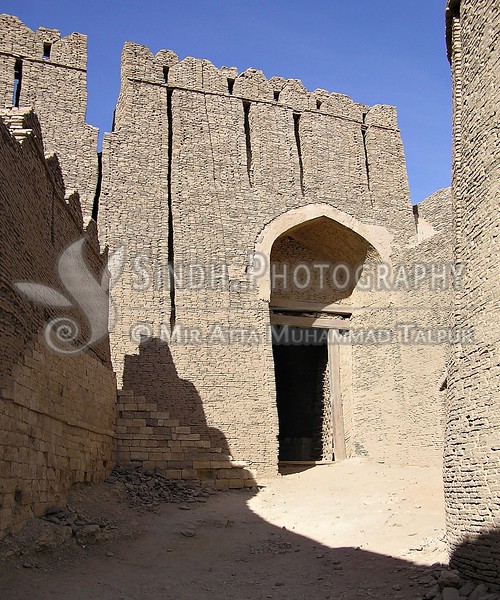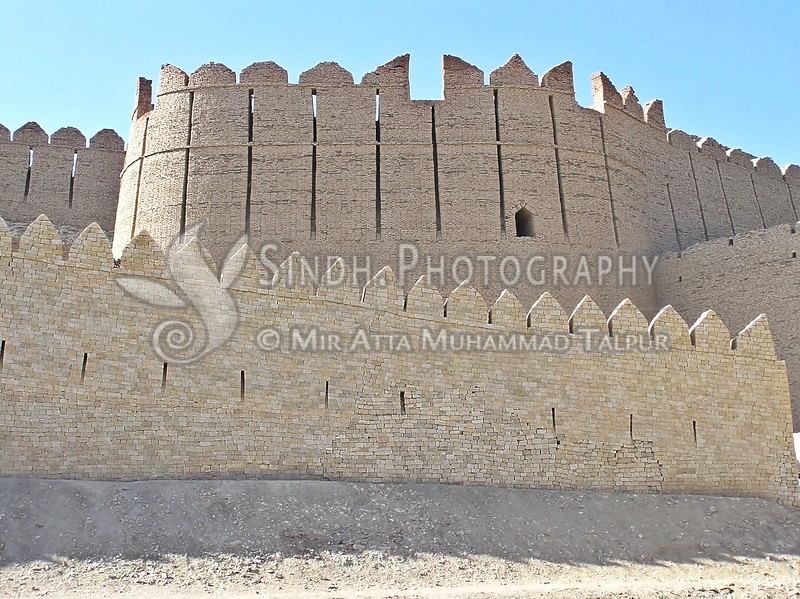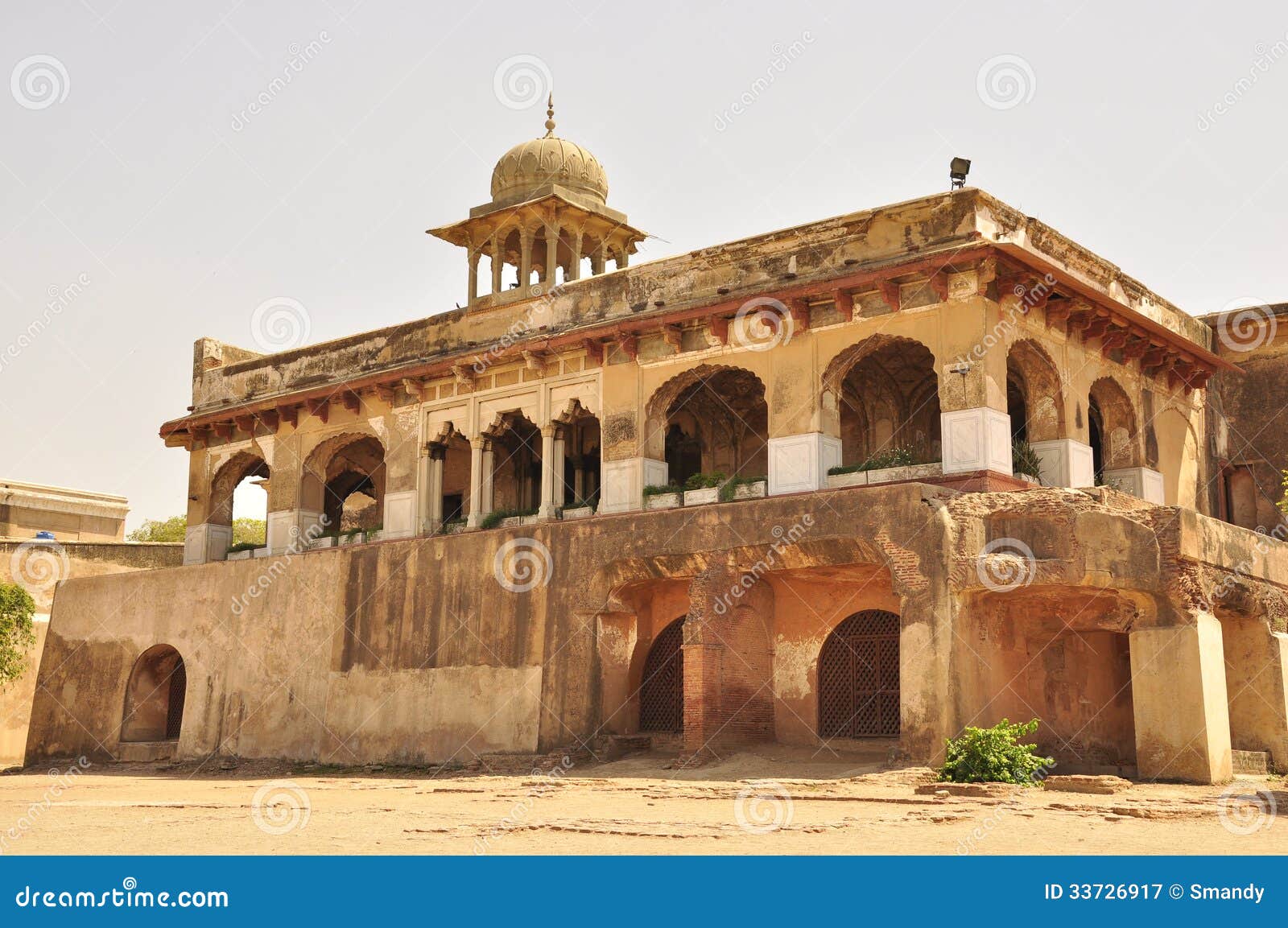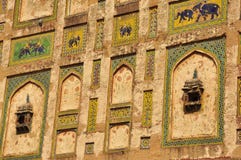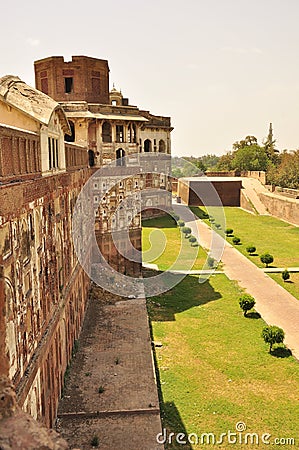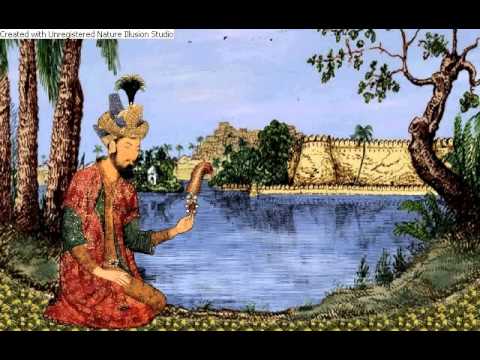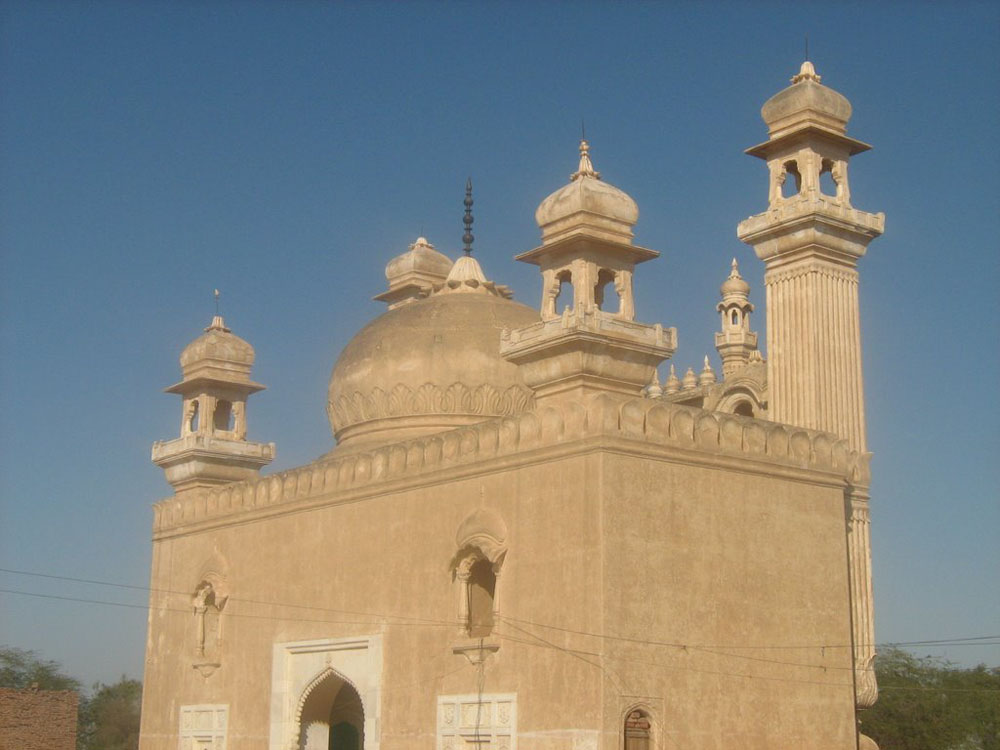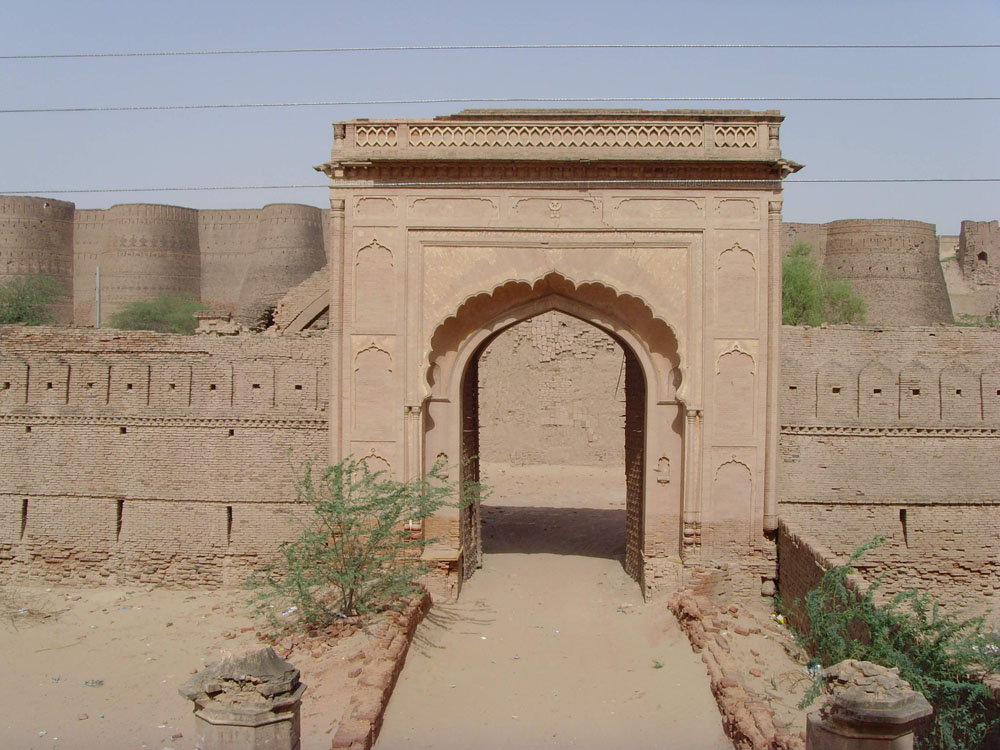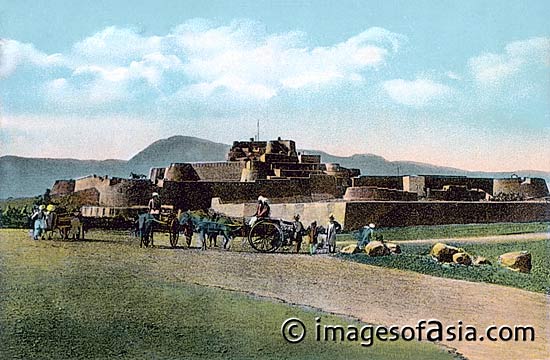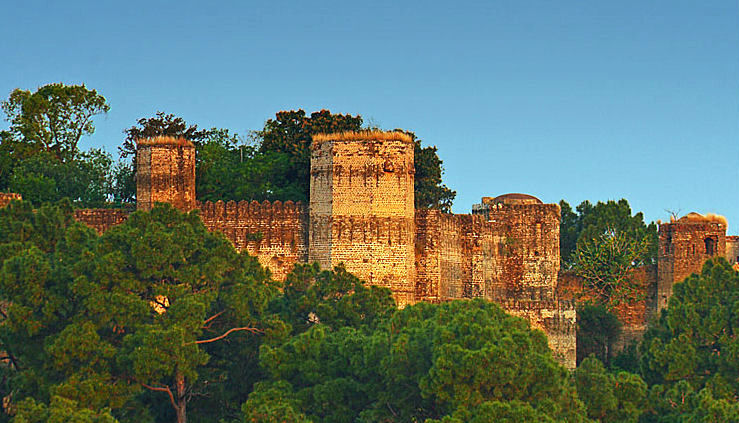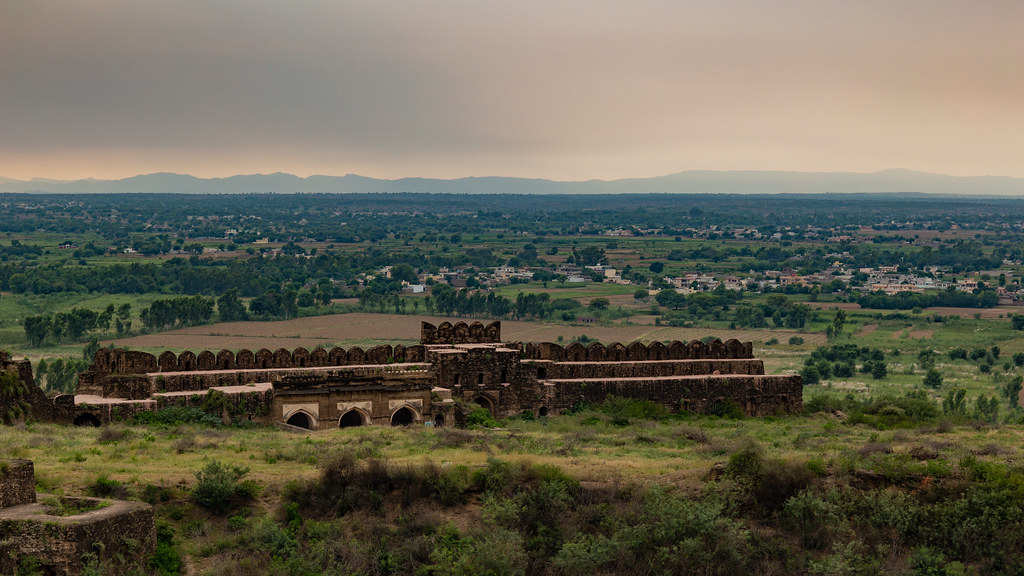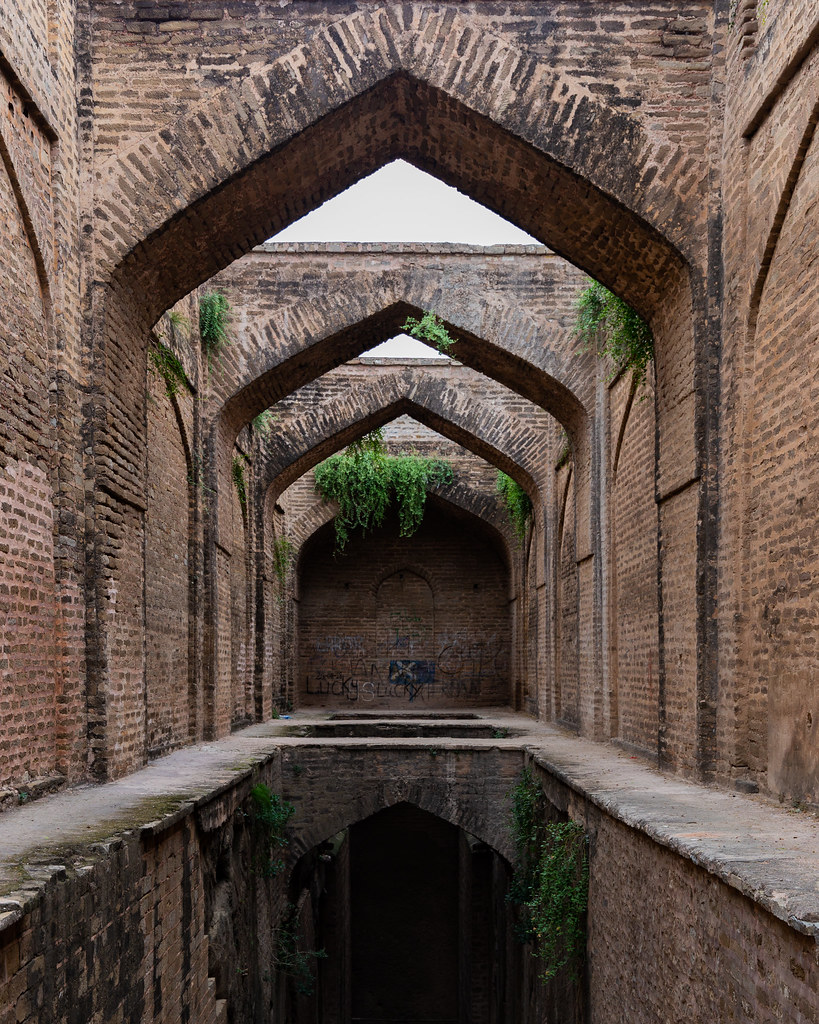A view of Begum Darwaza Pharwala Fort
Pharwala Fort Built in the 11th century by Sultan Kaigohar Gakhar on the ruins of an ancient fort, the Pharwala Fort in Potohar, Pakisan is the most unassailable fort in South Asia. It is well protected by high ridges on one end and deep ravines on the other. While its fortification wall has disappeared from many places, its opulence is visible from the walls and gates on the North Western side.
The fort has long been associated with the fearless clan of Gakhars, who are known for their bravery and fighting skills. The Gakhars have played an important role in setting the course of history in the Potohar region across the centuries, more often routing their opponents. This, however, has resulted in fierce rivalries with neighboring clans, most notably with the Janjuas of the Potohar region. It was on their advice that the great Mughal emperor Babur launched a campaign to conquer the Gakhar stronghold in 1519.
Gakhars, despite their strategic positioning, could not stand the might of Babur’s army and escaped through narrow gorges on the northern side of the fort.
However, an accord was met between Babur and the Gakhar chieftains’ which had lasting consequences over the politics of the region. As it turned out, the Gakhars remained loyal to the Mughals and even supported Humayun in his exile. Shershah, who took over the rest of the Mughal Empire, could never take away Pharwala Fort from the resilient Gakhars and later ordered the construction of the Rohtas Fort to quell Gakhar's resistance.








